How To Make A Compost Pile Which
Adds Life To Your Vegetable Garden
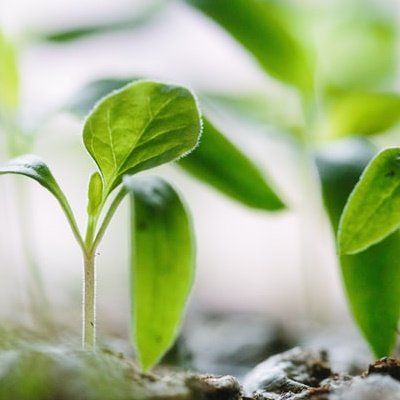
Let's learn how to make a compost pile out of all that old vegetable and garden plant material that inevitably collects over time in your garden? There really is no secret recipe and the - how to make a compost pile - question is quite easily answered.
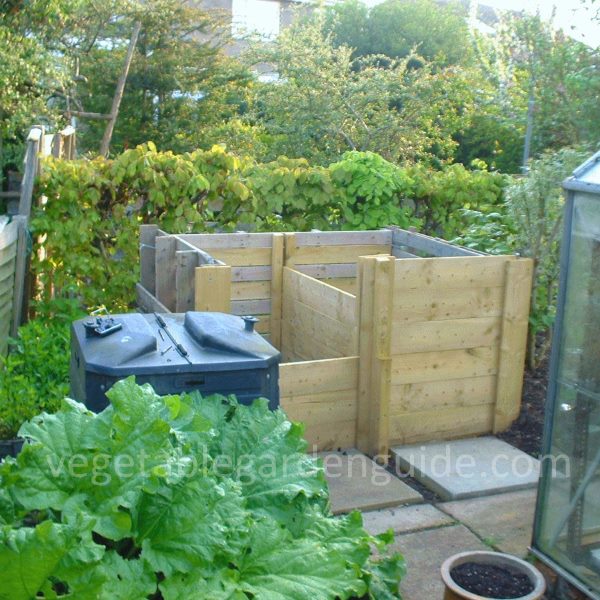
A compost heap should be a necessary feature in any average garden. It's a means of collecting together the waste material gathered during regular gardening. When composted it supplies the garden's soil with essential organic matter.
With a little pre-planning and some work, the end product will be an amazing material that has undergone a miraculous transformation and is ready to offer up its life promoting properties to your vegetable plants, leaving them healthy and stuffed with flavour, minerals and nutrients.
There are a number of ways in which compost heaps can be made and as many theories exist as to the way in which they should be handled.
How to Make Compost Pile! - Vital Info
Two important points which are necessary for successful composting are:
- Adequate drainage and aeration and...
- Sufficient moisture.
The organic material produced fulfils several vital functions:
- It helps to improve the structure of the soil, especially heavy clay and light sandy types.
- It encourages a vigorous and healthy root system, also acting as a sponge to retain moisture.
- Light, sandy soils tend to dry out rather quickly and a high humus content is necessary to overcome this problem.
How To Make A Compost Heap - Siting
Give some thought on how to make a compost heap by giving consideration to its siting, particularly if your garden is small. You may not have much choice but try not to locate it under trees or deep shade, keep it as close to your vegetable patch as possible
One of the easiest ways of making compost is to purchase bins or containers which have been specially constructed for this purpose. More on these later.
How Do You Make Compost - Raw Materials
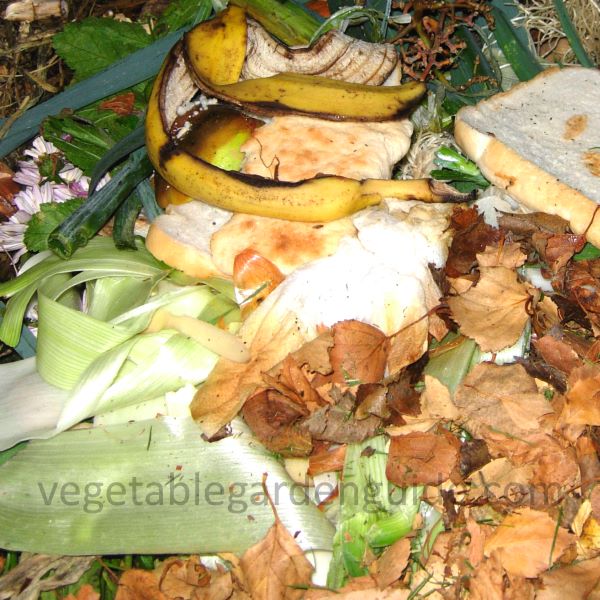
Well rotted, composted vegetable waste can be used as a mulch at the base of vegetables and between their rows, smothering small weeds and preventing the surface soil from drying out. Or it can be dug into your beds to improve the soil's structure and to make the necessary nutrients available to your growing vegetables.
How to make a compost successfully depends on the transformation of waste vegetable material through the action of bacteria and fungi. These bacteria and fungi get a lot of help from worms and insects too.
Where tougher items are to be broken down (brussels sprout stems), bruise or chop the stems to aid rotting. Using a shredder for this is priceless, increases the surface area of the material and allows the micro organisms and worms to break it down faster.
This older, tougher material gives body to the pile and will make up the bulk of your finished material.
If you don't have a shredder then chop up with a spade or lawn mower - if the material is not too big or hard.
Cover the top of the compost heap with an old carpet, blanket or polystyrene sheets - anything to keep it from becoming too drenched and to give some insulation, this is how to make a compost pile work harder for better results.
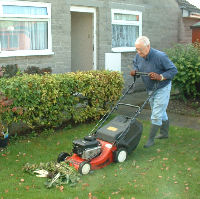 |
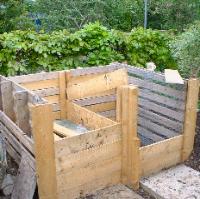 |
How To Make a Compost - What's in...
| Balancing Act | Rough Stuff | Slow Rotters | Activators |
|
Vegetable plant remains Fruit and vegetable scraps Old flowers Young hedge clippings Bedding plant remains Tea bags Coffee grounds Old straw and hay Strawy manures Soft prunings Perennial weeds Gerbil, hamster and rabbit bedding |
Wood ash Cardboard Paper towels Cardboard tubes from toilet rolls etc Egg boxes Paper bags |
Autumn leaves Tough hedge clippings Woody prunings Sawdust Wood shavings |
Grass cuttings Comfrey leaves Young weeds Urine Manure:
|
And What's Out...
How to make a compost fit for garden use is to ensure you don't add materials that will contaminate the pile - see list below...
Yuk!
Dog droppings
Coal and coke ash
Cat litter
Disposable nappies
Glossy magazines
Plastics
Diseased plant material
How Do You Make Compost - The Compost Heap
A common way of how to make a compost heap is in two wooden bays built side by side with open fronts which allow for wooden boards to be slotted in. As the heap builds, boards can be added to keep the contents contained.
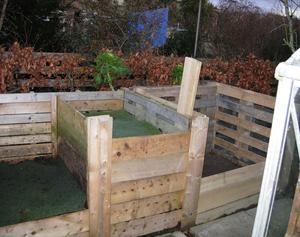
While one is full of maturing compost the other is being filled with fresh vegetable waste.
I prefer a three bay garden compost heap. Whilst one is maturing, I can turn the fresh scraps in the bay being filled on a regular basis by rotating between the two remaining bays - this increases the breakdown by the micro organisms. The result is 'black gold' available to my raised beds much more quickly.
How to make a compost heap break down more effectively is to make sure gaps are left in the frame work, or holes are made if you are using wood. This ensures that the micro organisms get the air they need which is essential to composting activity.
How do You Make Compost - A 'Cool' Compost Pile
- Gather as much material as possible to make a layer about 30cm(12") deep. Try for a reasonable mix of green and brown items - eg. green(wet-nitrogen) = brassica leaves, grass clippings etc. and brown(dry-carbon) = straw, hay etc.
NOTE: Too many grass clippings in one go is not recommended as they stick together and exclude air. - With these, create a layer in your container. Mix the green and brown material together and water if necessary.
- Continue to fill the compost bin with scraps from the kitchen and garden - trying to maintain the green/brown mix. Try mixing it into the previous layer.
- When it is full just leave it to rot down - periodically thrust a pole or bar into the compost heap and agitate so as to incorporate air.
- After about six months, longer if it is over the winter period, dig out the compost pile and use the material that is ready. Any un-composted vegetation can be the start of a new heap.
Note: Whilst this is a reasonable way to produce garden compost, nevertheless, there is still a danger that you may end up with a second rate product because not enough air was able to penetrate the mix.
How to make a compost quicker and more nutrient packed...
How do You Make Compost - A 'Hot' Compost Pile
- You could try and gather enough materials to fill your compost bin in one go but this is not always achievable. So gather as much as you can of green and brown items.
- Chop up the materials using shears, lawn mower or shredder etc.
- Having mixed the items together add them to your composting container and add water if necessary.
- Almost immediately your compost pile will begin to get hot (can reach up to 50-70C) - which is great as this proves the micro organisms are doing their business. If you wanted to chart this you can get a compost thermometer and make records.
- Whilst this is happening continue to add vegetable scraps from your kitchen and garden (see note below) - remember the mix (green/brown) so when you do the next step the scraps get mixed in.
NOTE: Ideally, the compost heap should be constructed in one go so everything is being broken at the same rate - but not all situations are ideal, we tend to have the scraps build up in small amounts over time but the end product won't take that much longer to produce. - When it starts to cool down in approx one or two weeks, turn the heap. Remove the contents, mix it all up, add water if necessary and put it back. The heating process will start again.
- Repeat this several times and when the heap no longer heats up to any degree leave it to finish composting.
In summer you could have compost ready in two or three months or even less. In winter it would take a little longer.
Whether you are making a 'cold' or 'hot' pile cover the top with an old blanket, carpet etc. to keep it insulated and stop excessive rain.
Once you have experienced this process and seen the end results you will be hooked and on your way to becoming a composting nerd.





